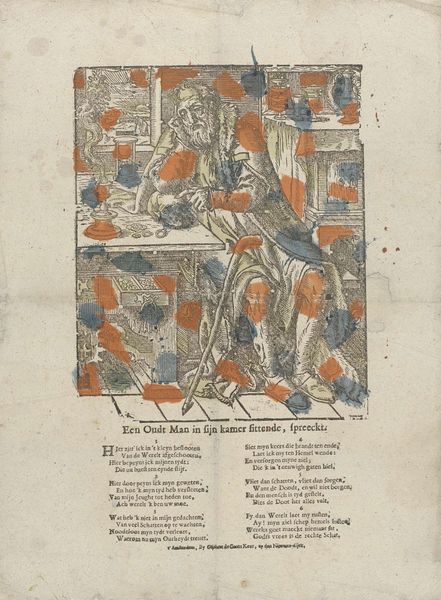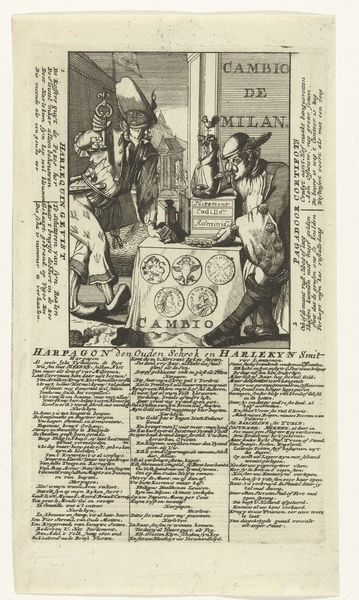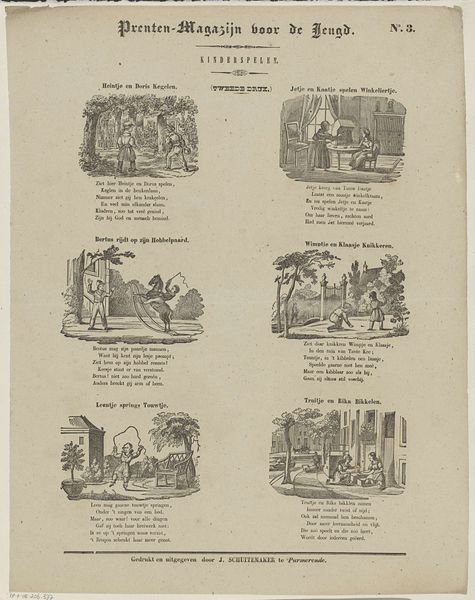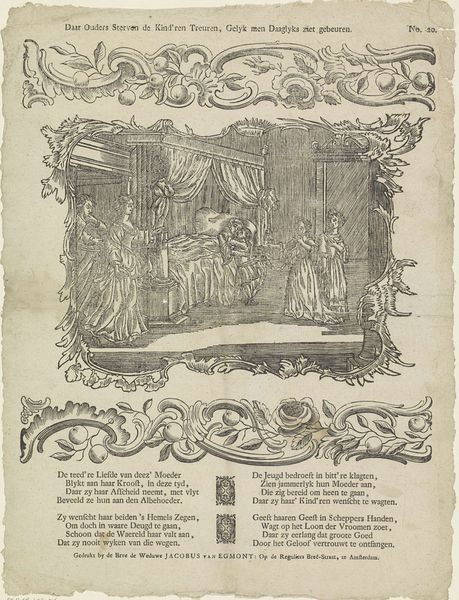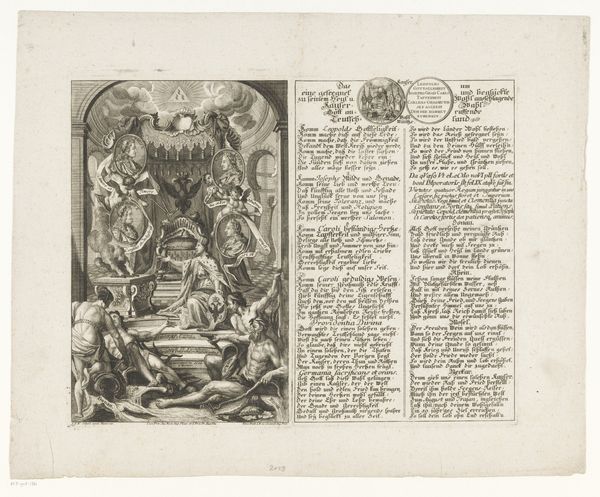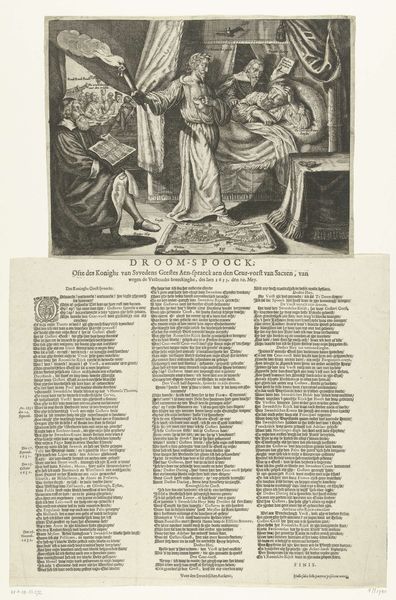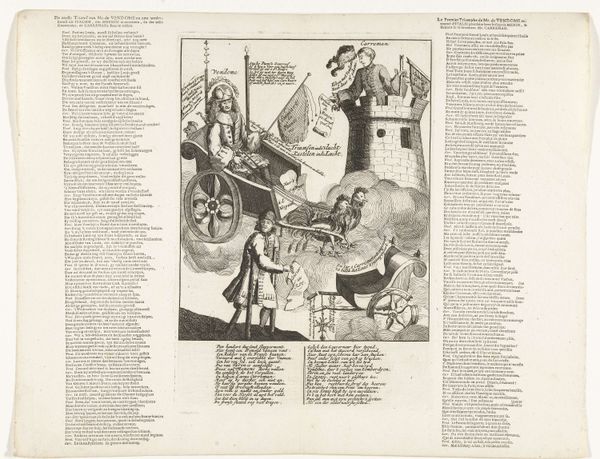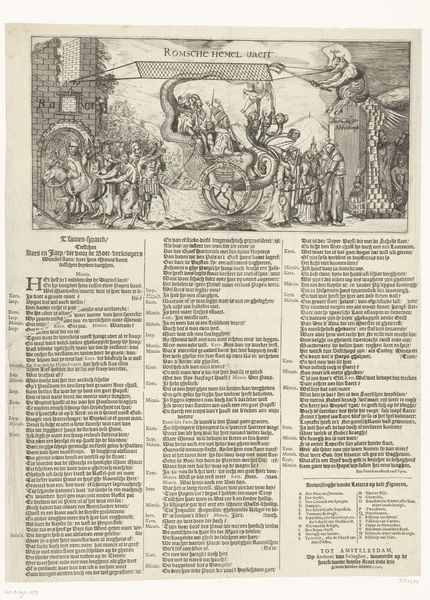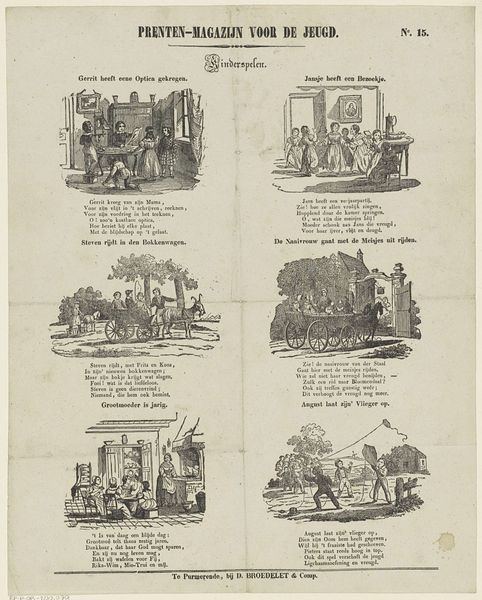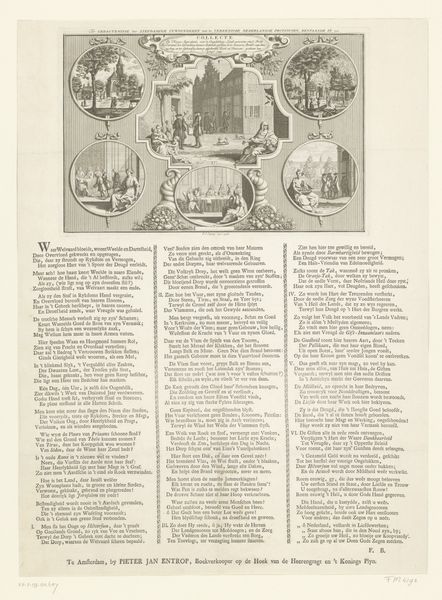
Een oud man in zijn kamer zittende, spreekt. Possibly 1550 - 1780
0:00
0:00
Dimensions: height 415 mm, width 305 mm
Copyright: Rijks Museum: Open Domain
Curator: Here we have an engraving, likely dating from 1550 to 1780, titled "Een oud man in zijn kamer zittende, spreekt" - or "An old man sitting in his room, speaking." It’s currently held at the Rijksmuseum and attributed to Johannes Kannewet II. Editor: It’s immediately striking – that stark contrast, the detail etched into every line. A heavy mood hangs in the air, doesn’t it? A sense of contemplation, perhaps bordering on despair. Curator: Absolutely. Consider the process of creating such a detailed image, the labour involved in etching those lines into a metal plate, then using that to produce prints on paper. The availability of materials and skilled artisans was central to production of artwork like this, even affecting content through choice and custom. This act was surely more democratic than oil paint for one collector. Editor: Agreed, though look at the composition itself. The old man is positioned centrally, slumped over a table. His hand rests on a skull - a "vanitas" symbol, signifying the transience of life, no? The gaze is downcast. Curator: Precisely. The artist’s choice to use engraving allowed for precise lines and textures. The detailed rendering of the man's robes and the objects in the room suggests the access of such imagery in the book form. These material and distribution affordances reflect this engraving's probable existence as one page among many, possibly made in batches. Editor: Notice how the light seems to highlight certain objects—the skull, the hourglass, the scattered coins. These motifs converge to tell a powerful allegorical tale—a conventional story in new light. Curator: Consider too, that an artist like Kannewet was responding to social pressures in print as part of the image production economy and market forces in which their work participated. Editor: What remains is its timeless quality. The stark lines create a palpable sense of melancholy that resonates. Even today, one connects viscerally with this man's solitude. Curator: Understanding its manufacture alongside composition gives an understanding to why art was viewed in a given period as well as by whom, how and where it may have been enjoyed and shared in private life. Editor: Indeed. Examining the symbolic density reveals its lasting relevance, a study of aging, reflection, mortality. Curator: In sum, acknowledging both production circumstances and internal aesthetics allows for richer interpretations about both art and its world.
Comments
No comments
Be the first to comment and join the conversation on the ultimate creative platform.

